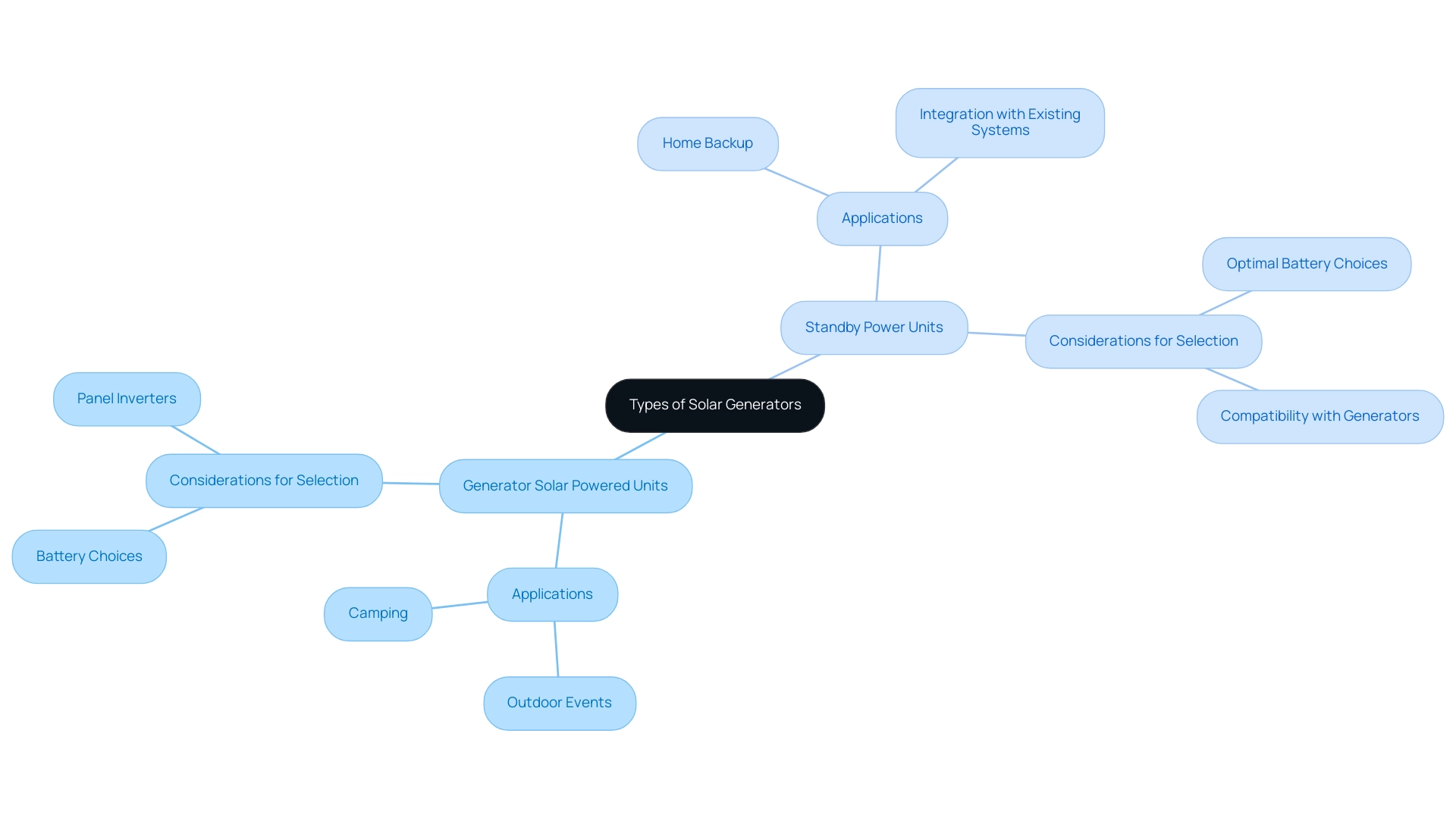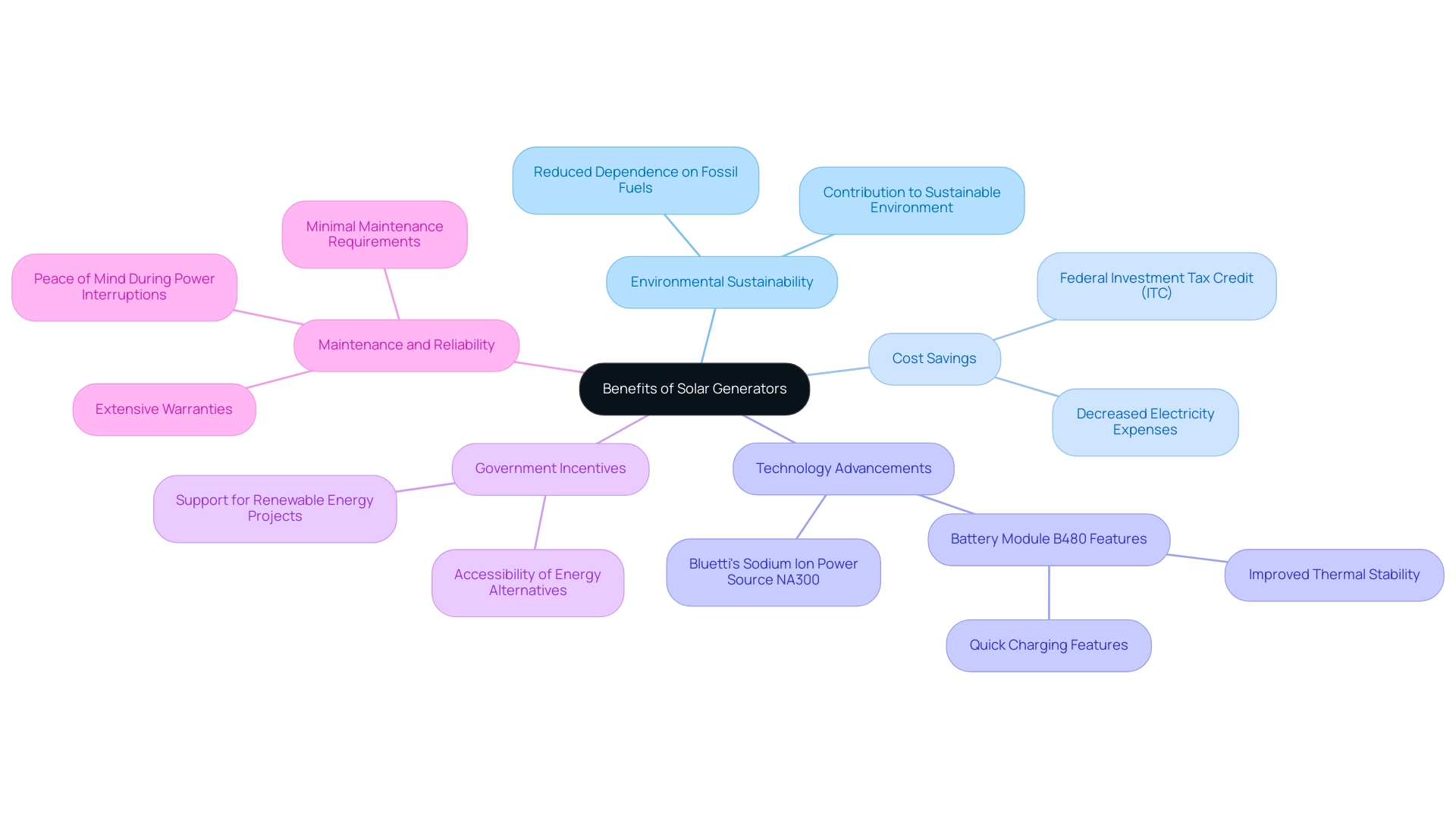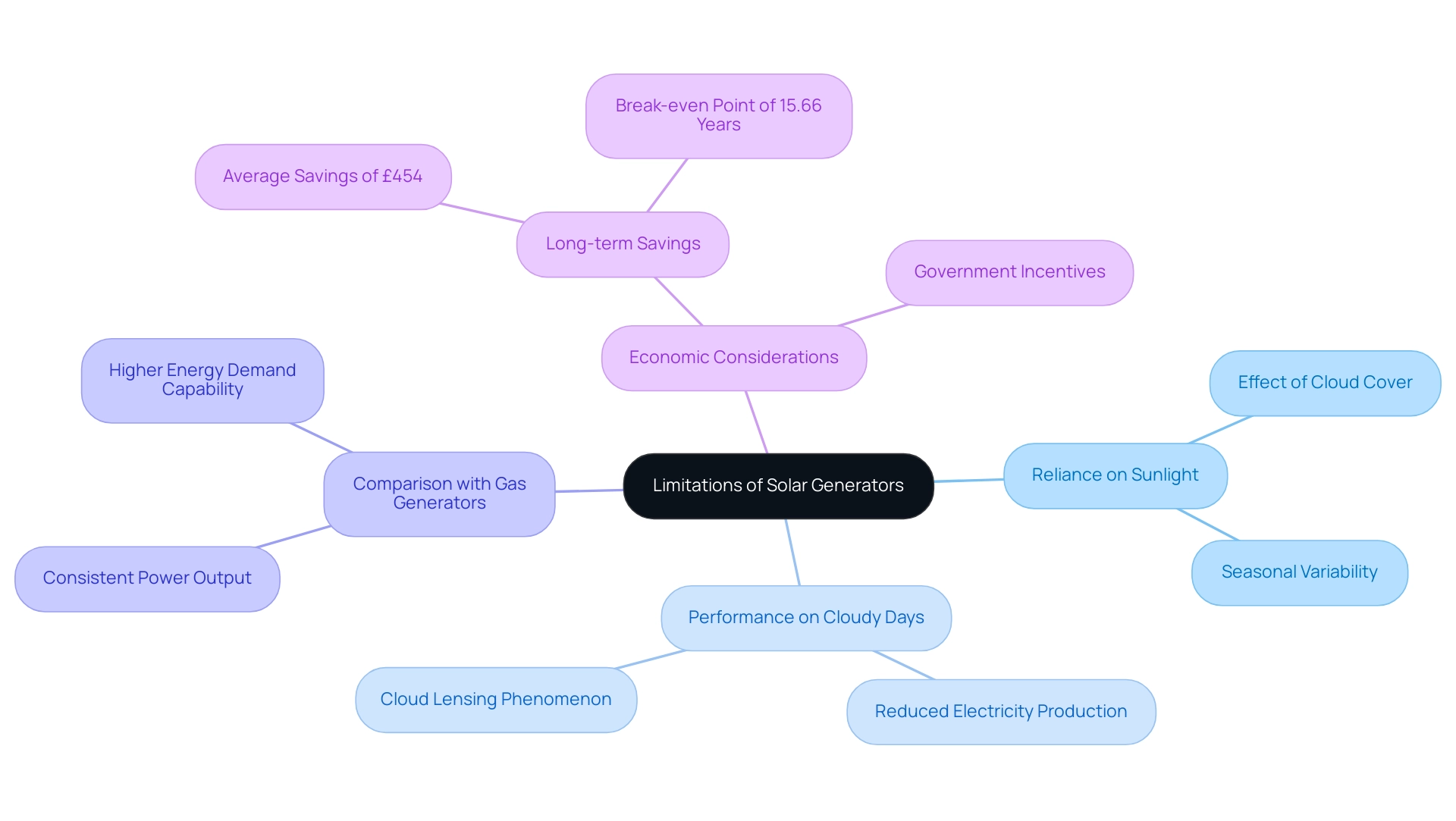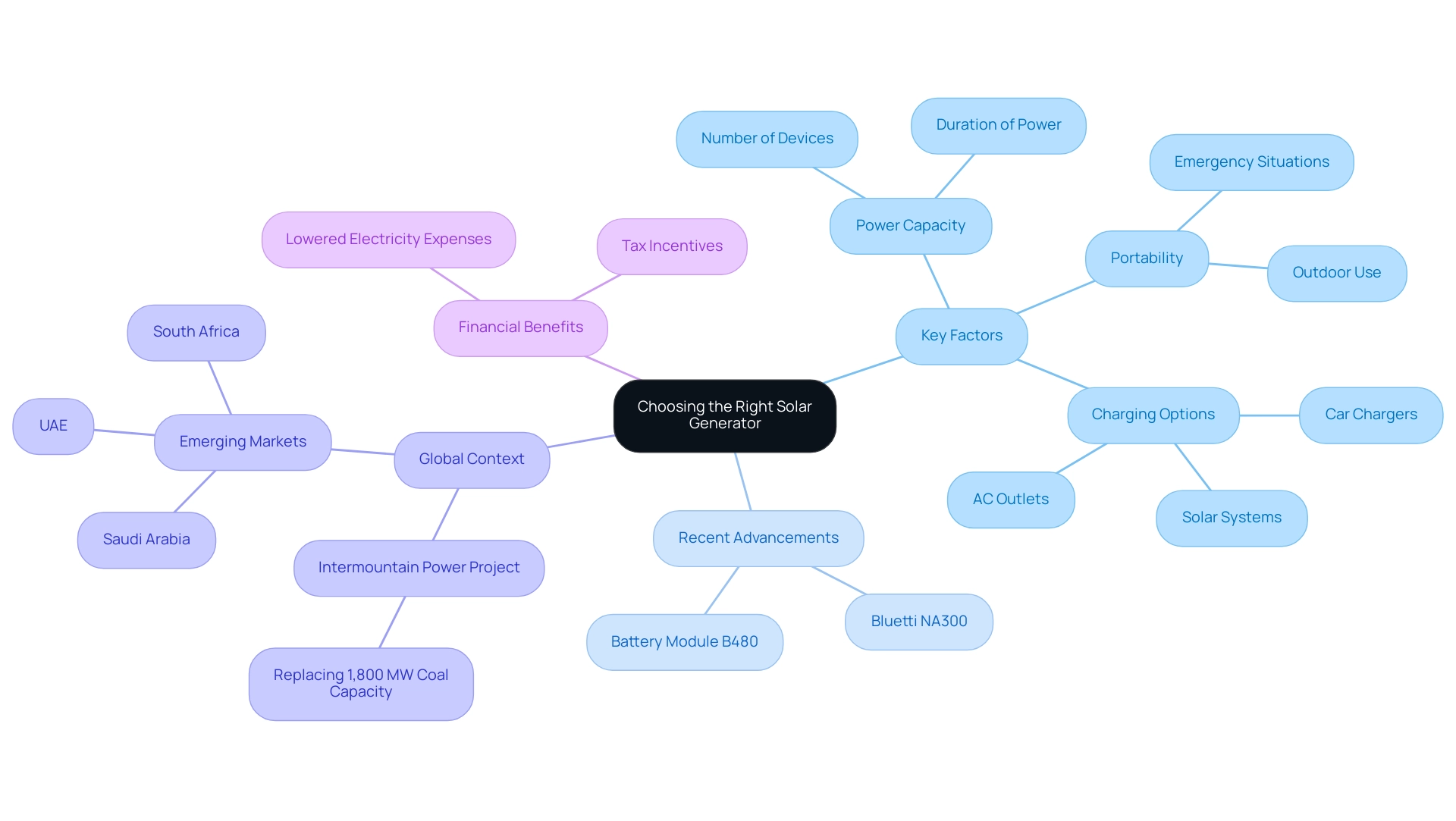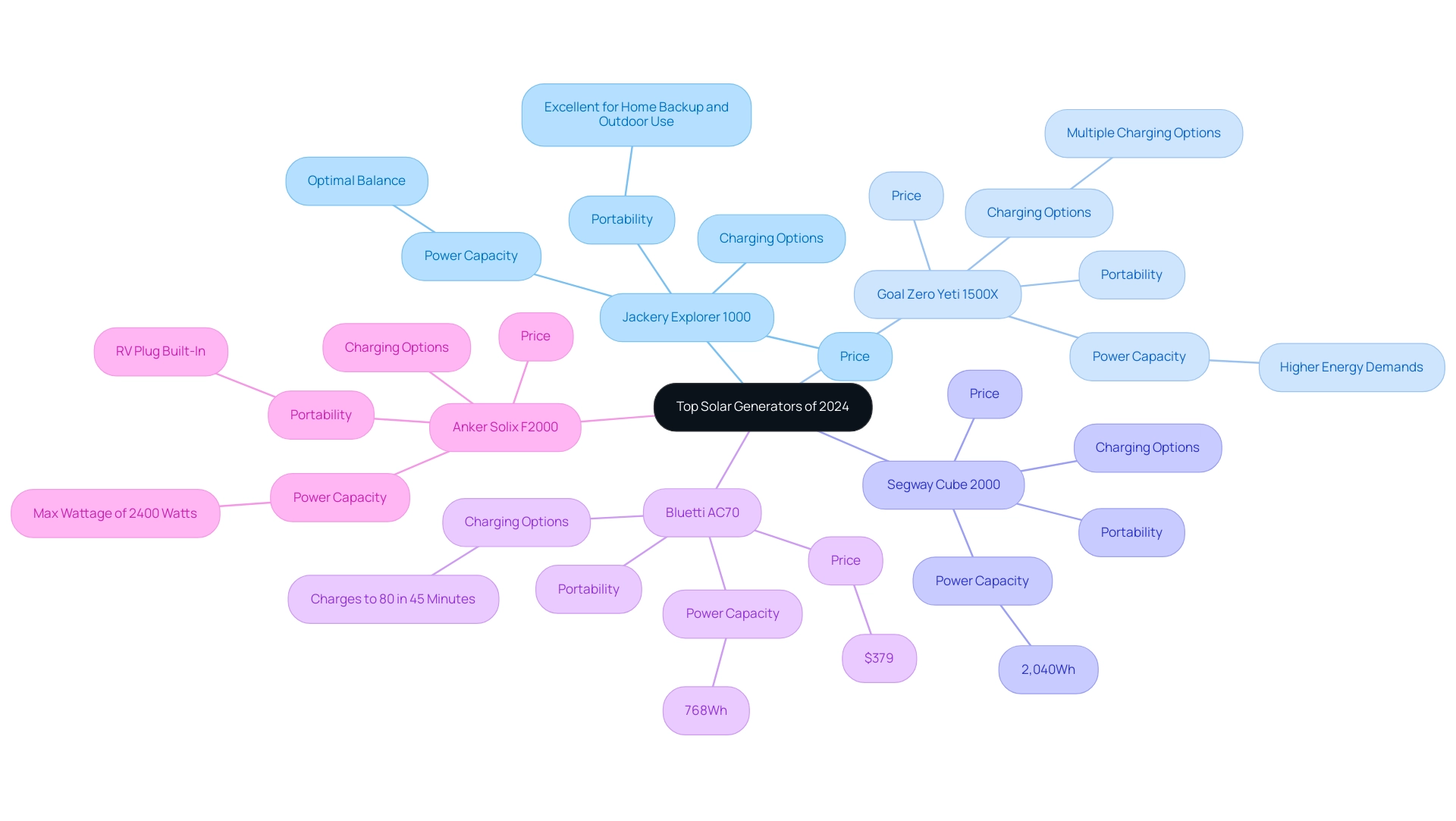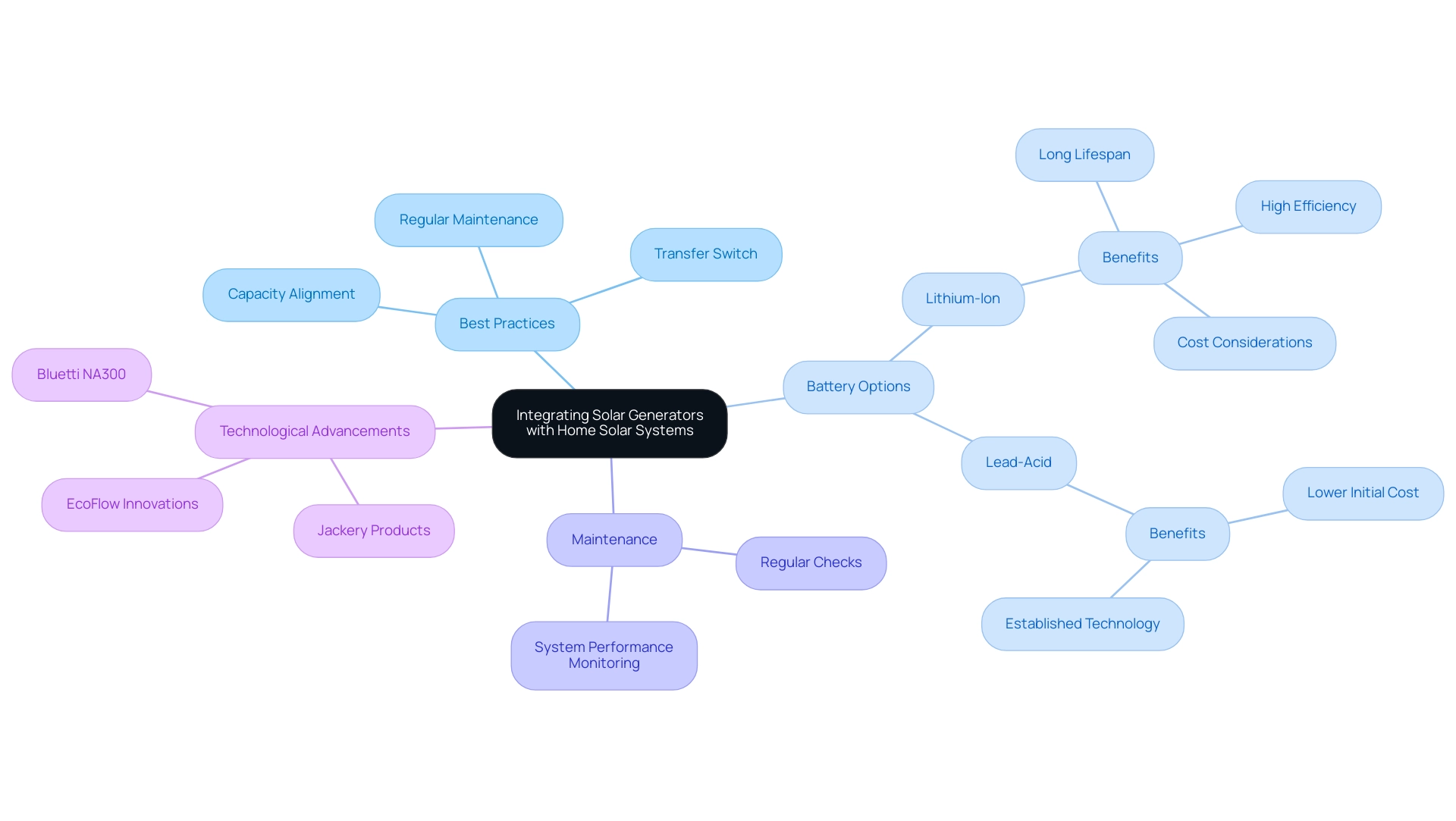Overview
The article focuses on comparing the best solar-powered generators for eco-friendly homes, emphasizing their environmental benefits, technological advancements, and financial advantages. It highlights how these generators reduce reliance on fossil fuels, showcase innovations like sodium-ion technology, and offer significant cost savings through government incentives, making them a practical choice for sustainable energy solutions.
Introduction
As the world pivots towards sustainable energy solutions, solar-powered generators have emerged as a beacon of innovation, offering a portable and eco-friendly alternative to traditional power sources. With solar energy contributing significantly to electricity generation, these generators not only reduce reliance on fossil fuels but also operate without harmful emissions, making them an attractive choice for environmentally conscious homeowners.
From outdoor adventures to emergency backup power, solar generators are versatile tools designed to meet a variety of energy needs. Recent technological advancements further enhance their appeal, promising improved efficiency and user-friendly features.
As interest in renewable energy surges, understanding the benefits, limitations, and options available in solar generators becomes essential for those looking to embrace a greener lifestyle.
Understanding Solar-Powered Generators: An Eco-Friendly Solution
Generator solar powered units are innovative, portable tools that transform sunlight into electricity, offering a sustainable power solution for various applications. In 2023, photovoltaic power contributed 165 billion kWh, indicating 3.9% of overall electricity production—a testament to the growing dependence on renewable resources. Unlike conventional power sources that rely on fossil fuels and generate harmful emissions, photovoltaic systems function without emissions, making them an eco-friendly option for homeowners keen to reduce their carbon footprint.
These devices are perfect not only for outdoor events and emergency backup energy but can also function as additional power sources for residences, especially when using a generator solar powered. Recent technological advancements, such as Bluetti’s introduction of the sodium ion generator NA300 and the compatible battery module B480, showcase improved thermal stability and rapid charging capabilities, further enhancing the practicality of renewable energy solutions. Moreover, the financial advantages of integrating photovoltaic systems extend beyond mere savings; they protect homeowners from the volatility of power costs and contribute to job creation and the reduction of greenhouse gas emissions, promoting a more sustainable future.
The Solar PV Growth Forecast indicates that installations are projected to increase significantly, driven by supportive policies like the Inflation Reduction Act and initiatives such as the Biden-Harris administration’s $7 billion Program for All, which seeks to enhance equitable access to renewable power. To fully adopt sustainable power practices, homeowners should consider expert views on the benefits of solar systems, which highlight their cost-efficiency and environmental benefits, ensuring fair access to renewable resources for everyone. Additionally, residential net metered energy installations can significantly enhance a state’s economic output, creating jobs and positively impacting public health.
Exploring Different Types of Solar Generators: Which One is Right for You?
Solar power systems are categorized into distinct types, each tailored for specific applications. Generator solar powered units are lightweight and extremely efficient for activities such as camping or outdoor events, offering unparalleled convenience and mobility. Standby power units, conversely, are designed for home applications, providing dependable backup electricity during outages and effortlessly integrating with current energy systems, such as a generator solar powered system.
This integration enables homeowners, especially environmentally aware individuals, to sustain power continuity without interruption while effectively utilizing a generator solar powered by sunlight. Furthermore, generator solar powered system combine sunlight with conventional fuel sources, providing a flexible option that adjusts to changing energy requirements. As Aditi Shivarkar observes, ‘Adaptability is crucial in a market where consumer preferences are shifting towards sustainable options.’
With a new energy project being installed every 39 seconds in 2023, the momentum in renewable technology is undeniable. North America is set to dominate the worldwide renewable power market from 2024 to 2034, fueled by increased environmental consciousness and favorable government incentives, which are essential for renters in Long Beach looking for eco-friendly solutions. For those interested in panel functionality and optimal battery choices, user manuals provide essential guidance.
It is essential to evaluate the top battery choices available, along with optimal methods for choosing panel inverters, ensuring that the selected device corresponds with particular power requirements. Comprehending these differences becomes crucial for homeowners seeking to select the device that best matches their lifestyle and power needs, particularly as they investigate options like Tesla home chargers and engage in government initiatives. This understanding paves the way for creative approaches in autonomy and emphasizes the economic and ecological advantages of investing in sunlight heating systems, encompassing both active and passive methods.
The Benefits of Solar Generators: Why Go Solar?
Generator solar powered systems offer numerous benefits for environmentally aware homeowners, especially in Long Beach, where obtaining sustainable power options is essential. By utilizing a generator solar powered by renewable sunlight, users can significantly reduce their dependence on fossil fuels, contributing to a more sustainable environment. Significantly, around 43 states currently showcase at least one community energy project, highlighting the increasing trend towards renewable energy solutions.
Recent advancements, such as Bluetti’s sodium ion power source NA300 and the compatible battery module B480, exemplify the industry’s commitment to delivering cutting-edge technology. Bluetti announces, ‘We are thrilled to present our new sodium ion power source NA300 and the compatible battery module B480, which offer improved thermal stability and quick charging features.’ Homeowners can anticipate significant decreases in their electricity expenses as generator solar powered systems become a practical alternative power source for various uses, with average costs ranging from $1,000 to $3,000 based on capacity and features.
Furthermore, government initiatives and incentives, such as the Federal Investment Tax Credit (ITC), can significantly reduce the initial investment, making energy alternatives more accessible. These systems require minimal maintenance, often including cleaning services that ensure optimal performance, and come with extensive warranties, ensuring long-term reliability. In the case of power interruptions, alternative energy devices provide invaluable peace of mind, enabling homeowners to sustain essential functions effortlessly.
Moreover, the implementation of renewable energy technologies in areas such as Saudi Arabia, UAE, and South Africa emphasizes the worldwide possibilities for power systems. As the market develops, the advantages of photovoltaic systems become increasingly clear, paving the way for improved energy autonomy and cost savings.
Limitations of Solar Generators: What You Need to Know
While photovoltaic systems offer numerous advantages for eco-conscious homeowners, it is essential to recognize specific limitations. A key drawback is their reliance on sunlight; during overcast days or winter months, the effectiveness of photovoltaic systems can decrease significantly. For instance, the case study titled ‘Influence of Cloud Cover on PV Performance’ reveals that thick clouds scatter and absorb sunlight, leading to a marked decrease in electricity production.
Even under overcast conditions, some sunlight penetrates, but the overall output may not meet the demands of high-energy appliances. Furthermore, phenomena such as ‘cloud lensing’ can lead to variations in sunlight generation, emphasizing the unpredictability of efficiency based on weather conditions. In comparison, gas-powered units typically provide a consistent power output regardless of weather, making them a more reliable option for high-demand devices.
Additionally, generator solar powered systems typically demonstrate reduced power output in comparison to conventional generators; they may generate considerably less electricity than gas-powered alternatives, which might be inadequate for operating several high-demand devices simultaneously. Although the initial investment in photovoltaic technology can be substantial, this cost is often mitigated by long-term savings on electricity bills—homeowners can save an average of £454 annually, with a break-even point on panel purchases projected at around 15.66 years. Programs and incentives from the government, combined with Tesla home chargers, can further enhance the economic feasibility of renewable power solutions.
As SunPower wisely notes, ‘That’s good evidence that utilizing renewable energy is about reducing your utility expenses and assisting the planet — not about the weather.’ Recognizing these constraints and possibilities is essential for homeowners in establishing practical expectations and assessing whether renewable power sources match their requirements. Additionally, understanding how energy performance can vary on cloudy days is vital for making informed decisions about energy solutions.
Choosing the Right Solar Generator: Key Factors to Consider
When choosing a generator solar powered for renewable energy, eco-conscious homeowners must consider several essential factors, including power capacity, portability, and charging options. Understanding power capacity is vital, as it dictates the number of devices that can be powered simultaneously and for how long. As of Q3 2024, the photovoltaic industry has seen over 30 GW of installations, establishing it as a leading technology for new capacity in the U.S.
This growth signifies a considerable shift toward renewable power solutions, emphasized by initiatives like the Intermountain Power Project, which aims to replace 1,800 MW of coal-fired capacity with cleaner alternatives. Such transitions emphasize the significance of selecting a power source that can fulfill specific energy requirements and enhance energy storage through the best battery options available. Portability is another key consideration, particularly for those planning to use the device for outdoor activities or emergency situations.
Furthermore, assessing the available charging alternatives is crucial; many contemporary models can be powered using generator solar powered systems, AC outlets, or car chargers, providing versatility depending on personal situations. It’s also significant that areas such as Saudi Arabia, UAE, and South Africa are in the initial phase of embracing renewable energy technology, which offers a wider context for environmentally aware homeowners. Recent advancements, such as Bluetti’s launch of the sodium ion generator NA300 and compatible battery module B480, exemplify the innovations in energy technology, catering to evolving consumer preferences.
To further assist homeowners, it is essential to understand how photovoltaic panels operate, including their capacity to convert sunlight into power and the function of inverters in regulating flow. Homeowners should also consider the financial benefits of photovoltaic systems, such as lowered electricity expenses and possible tax incentives, alongside the ecological advantages of utilizing renewable power sources. By thoroughly evaluating these elements considering individual preferences, including comprehensive specifications and comparisons of the top battery options, homeowners can make knowledgeable choices that best match their lifestyles and power needs.
Top Solar Generators of 2024: Reviews and Recommendations
In 2024, the generator solar powered market showcases impressive advancements, with several models emerging as leaders in performance and reliability. The Jackery Explorer 1000 stands out for its optimal balance of power capacity and portability, making it an excellent choice for both home backup and outdoor adventures. Real-world reviews highlight its versatility, with users appreciating its capability to power essential devices during emergencies.
Similarly, the Goal Zero Yeti 1500X excels in meeting higher energy demands, offering multiple charging options that cater to a range of applications. Its robust performance has earned it accolades from consumers seeking dependable power options. Notably, the Segway Cube 2000 offers a substantial capacity of 2,040, providing a significant benchmark for comparison among these models.
For those mindful of their budget, the Bluetti AC70, currently on sale for $379, presents outstanding value with its 768Wh capacity and the ability to charge to 80% in just 45 minutes, making it a practical option for eco-conscious homeowners. Additionally, Laura Lancaster’s insight on the Anker Solix F2000, stating, ‘Unlike the C1000 model, the Anker Solix F2000 comes with an RV plug built in and a max wattage of 2400 watts (which I did test),’ adds a valuable consumer perspective. This thorough guide not only emphasizes the latest power supply models but also corresponds with insights on Tesla home chargers, photovoltaic panel functionality, and government programs that can offer financial incentives for homeowners looking to install a generator solar powered system.
Additionally, taking into account the significance of upkeep, investigating panel cleaning services can assist in guaranteeing the durability and effectiveness of these power options. With distinct characteristics among these models, homeowners can choose the power source that most closely matches their requirements and financial factors while taking into account the wider context of renewable solutions.
Integrating Solar Generators with Your Home Solar System: Best Practices
Incorporating a power source with an existing residential energy system significantly enhances energy efficiency, enabling environmentally aware homeowners to optimize their utilization of renewable energy resources. To attain peak performance, it’s vital to align the device’s capacity with the output of the photovoltaic panels, avoiding overload scenarios. A transfer switch is advised to enable a smooth transition between the generator and the grid during power outages, ensuring continuous power supply.
Regular maintenance checks are vital for keeping both systems running smoothly and efficiently. Grasping how photovoltaic panels function is essential; they transform sunlight into electricity, which can be stored in batteries for future use. Recent insights from installers indicate that as of 2023, 7% of all installation jobs involved adding battery storage to existing PV systems, primarily for backup purposes rather than financial incentives.
This trend emphasizes the increasing significance of incorporating renewable energy sources not only for primary energy utilization but also as dependable backup options. Homeowners should consider the best battery options, such as lithium-ion and lead-acid batteries, which offer different benefits in terms of lifespan, efficiency, and cost. Additionally, progress in photovoltaic power technology is highlighted by recent product releases from firms such as Jackery and EcoFlow, which include cutting-edge designs that improve usability.
Significantly, Bluetti’s launch of the generator solar powered sodium ion power generator NA300 and the compatible battery module B480 showcases the sector’s dedication to enhancing power solutions. By following these best practices, including utilizing services that store solar electricity, homeowners can maximize their energy savings and ensure a dependable power supply during emergencies.
Conclusion
The exploration of solar-powered generators highlights their significance as a sustainable energy solution in today’s eco-conscious landscape. These innovative devices convert sunlight into electricity, offering a clean alternative to traditional generators that rely on fossil fuels. The versatility of solar generators makes them suitable for various applications, from outdoor activities to emergency backup power, while recent technological advancements enhance their efficiency and user-friendliness.
Understanding the benefits and limitations of solar generators is crucial for homeowners considering this eco-friendly option. While they provide substantial savings on electricity bills and contribute to a reduction in carbon emissions, potential users must also be aware of their dependence on sunlight and the challenges posed by varying weather conditions. However, with supportive policies and incentives making solar energy more accessible, the long-term advantages often outweigh the initial investment.
As the solar generator market continues to evolve, selecting the right model becomes paramount. Factors such as power capacity, portability, and charging options should guide homeowners in making informed decisions tailored to their unique energy needs. The integration of solar generators with existing home solar systems further enhances energy efficiency, ensuring a reliable power supply during outages.
In conclusion, embracing solar generators represents a pivotal step towards a greener lifestyle. By investing in these innovative solutions, homeowners not only contribute to a sustainable future but also enjoy the economic benefits associated with renewable energy. As the demand for solar technology grows, the collective impact on the environment and local economies will be profound, making now the ideal time to explore the world of solar-powered energy solutions.




